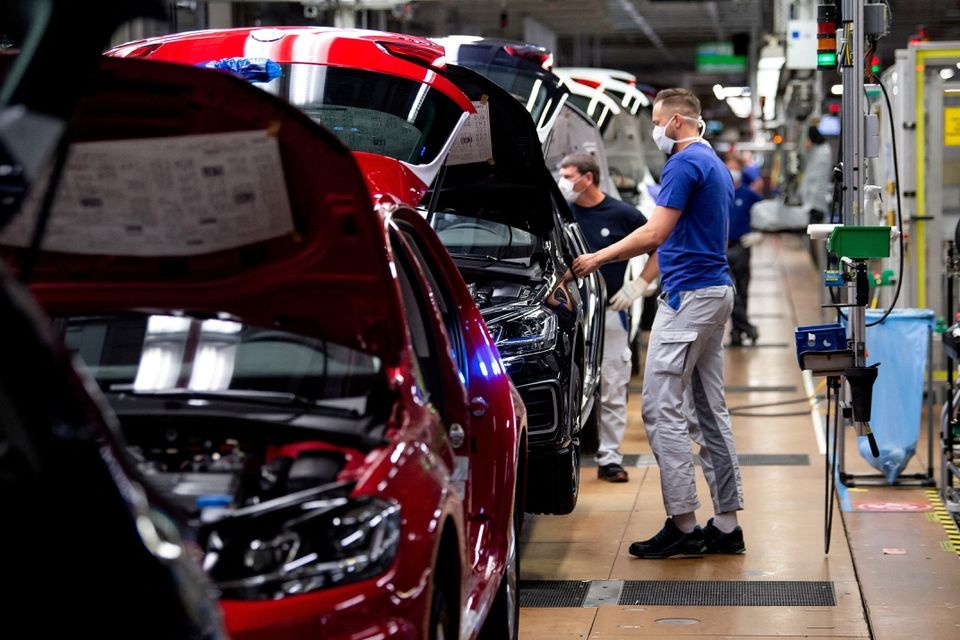
|
|
The price of cars may increase significantly to meet Euro 7 emission standards. Photo: Reuters. |
According to Carscoops, the strict regulations of the Euro 7 emission standard could increase the actual cost per vehicle by 4 to 10 times the initial estimate. This is the result of the latest research conducted under the authorization of the European Automobile Manufacturers Association (ACEA).
Specifically, the study carried out by Frontier Economics shows that the cost of engine upgrades to meet the Euro 7 emission standard is 1,862 EUR (about $2,000) for passenger cars and gasoline vans. For vehicles equipped with diesel engines, this figure is about 2,629 EUR, equivalent to $2,822.
According to the research organization, the actual cost ranges mentioned above are 5 and 10 times higher than the initial estimates provided by the European Commission.
| |
|
The cost difference of engine upgrades between the European Commission’s estimated figures (right column) and the actual figures (left column) according to Frontier Economics’ study. Photo: ACEA. |
Similarly, the cost of engine upgrades to comply with the Euro 7 emission standard will be around 11,707 EUR (about $12,570) for trucks and diesel buses, about 4 times higher than the initial figure proposed by the European Commission.
It is worth noting that the aforementioned study is only estimating the direct costs for engine upgrades, equipment, and other investments in the vehicle manufacturing process. Therefore, the cost difference from the user’s perspective is expected to be even higher than the initial forecast.
Carscoops cites estimates from industry experts that Euro 7 engines can increase fuel consumption by an additional 3.5%, equivalent to a difference of 650 EUR (about $698) for passenger cars, vans, and up to 20,000 EUR (about $21,470) for long-haul trucks throughout their entire life cycle.
Last year, Mr. Thomas Schäfer – CEO of Volkswagen’s Passenger Cars division – stated that the cost of engine upgrades to meet the Euro 7 emission standard could reach 5,000 EUR (about $5,367) per vehicle.
Meanwhile, Mr. Klaus Zellmer – CEO of Skoda Auto – also noted that the current 15,000 EUR models could have to increase their list prices to 18,000-20,000 EUR (equivalent to a difference of $3,220-$5,367/vehicle) in the future to meet the Euro 7 emission standard.
The unfavorable cost developments mentioned above are causing some automakers to start phasing out combustion engine-powered models from smaller segments and transition to developing electric vehicles.
| |
|
Many car manufacturers are replacing small-sized combustion engine cars with electric models. Photo: Ford. |
In its report, ACEA asserts that Europe has the most comprehensive and stringent emission standards for vehicle pollution.
“With the current Euro 6/VI standard, emissions have become so low that they are virtually undetectable,” ACEA states.
Therefore, the agency believes that implementing the Euro 7 emission standard is not the right direction to further reduce emissions because the “environmental impact is extremely low compared to the high cost”.
At the same time, ACEA believes that instead of pursuing the Euro 7 emission standard, Europe should focus on the electrification process, alongside replacing old vehicles with new models that can meet the current Euro 6/VI standard.
According to plans, the new emission regulations under the Euro 7 standard are expected to take effect for all cars and vans sold in Europe from July 2025.
Great Books to Read on the Road
The Cars section brings readers fascinating books on various topics. During the journeys with our vehicles, it is not uncommon to have moments of rest and relaxation, and books are the interesting companions.
































![[CAR REVIEW] User feedback on the Toyota Corolla Cross HV after 1 year of use](https://vnauto.net/wp-content/uploads/2023/10/xehay-toycross-30082022-7-150x150.jpg)

![[QUICK REVIEW] Detailed analysis of over 30 new features on the Suzuki Hybrid Ertiga 2022](https://vnauto.net/wp-content/uploads/2023/10/xehay-suzukihybridertiga-17102022-3-150x150.jpg)











